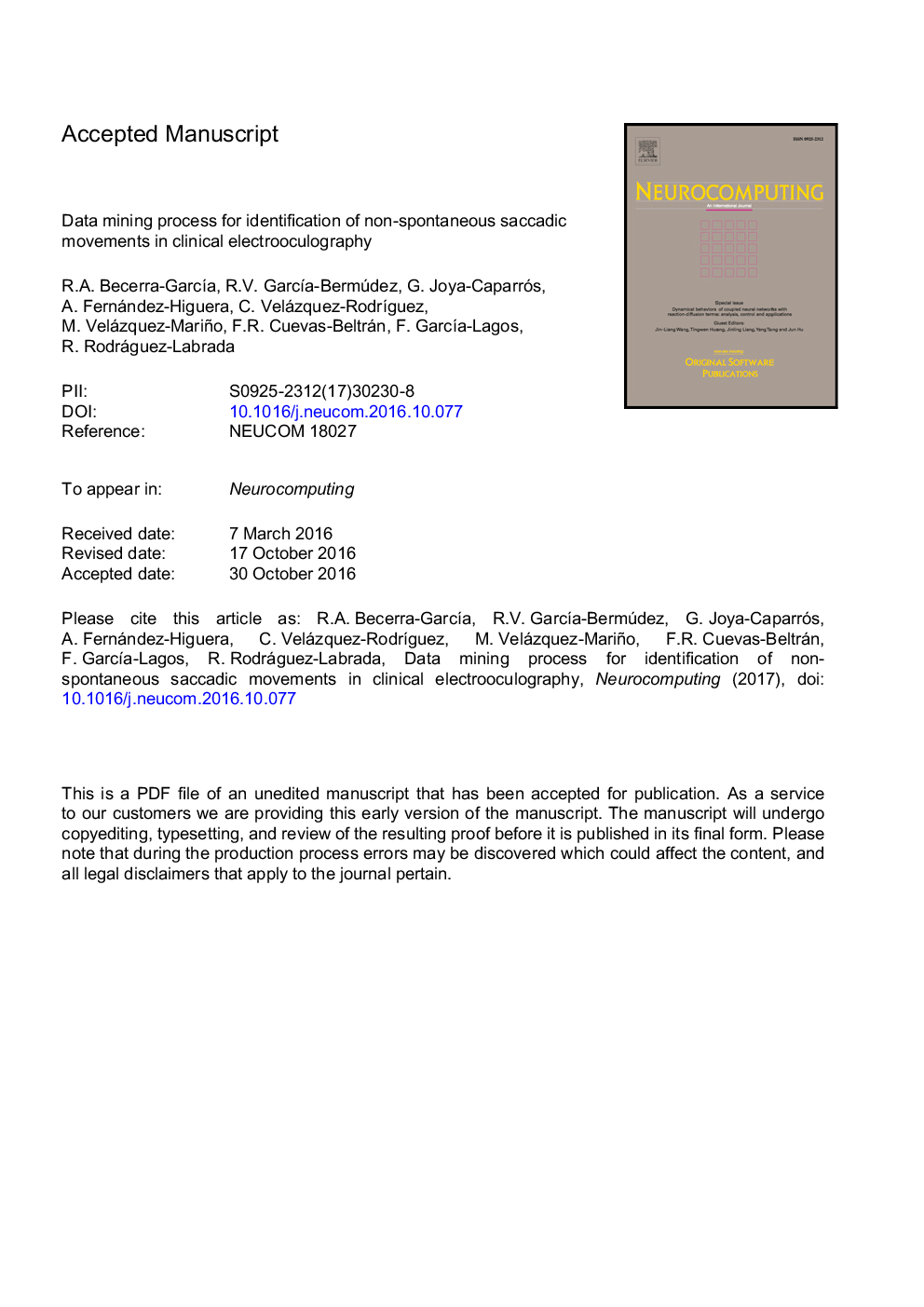| Article ID | Journal | Published Year | Pages | File Type |
|---|---|---|---|---|
| 4947307 | Neurocomputing | 2017 | 15 Pages |
Abstract
In this paper we evaluate the use of the machine learning algorithms Support Vector Machines (SVM), K-Nearest Neighbors (KNN) and Classification and Regression Trees (CART) to identify non-spontaneous saccades in clinical electrooculography tests. We propose a modification to an adaptive threshold estimation algorithm for detecting signal impulses without the need for any manually pre-established parameters. Data mining tasks such as feature selection and model tuning were performed, obtaining very efficient models using only 3 attributes: amplitude deviation, absolute response latency and relative latency. The models were evaluated with signals recorded from subjects affected by Spinocerebellar Ataxia type 2 (SCA2). Results obtained by the algorithm show accuracies over 98%, recalls over 98% and precisions over 95% for the three models evaluated.
Related Topics
Physical Sciences and Engineering
Computer Science
Artificial Intelligence
Authors
R.A. Becerra-GarcÃa, R.V. GarcÃa-Bermúdez, G. Joya-Caparrós, A. Fernández-Higuera, C. Velázquez-RodrÃguez, M. Velázquez-Mariño, F.R. Cuevas-Beltrán, F. GarcÃa-Lagos, R. Rodráguez-Labrada,
